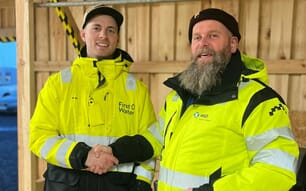Seawater pollution not only puts biodiversity at risk and disrupts the fragile equilibrium that exists underwater, but also affects economic activities, such as fisheries, aquaculture and tourism.
Scientists have been working on monitoring methods and technologies for many years to alert the public authorities and professionals about potential pollution risks for human health and the environment.
Unfortunately, methods currently used for the detection of water pollution are expensive and it can take up to five days before scientists are able to alert public authorities and professionals when the status of water quality becomes worrisome.
Traditional methods require specialized workers and heavy equipment; indeed, researchers have to use boats to go on-site, sample the water and return to the laboratory. Once in the laboratory, tests have to be run to analyse seawater quality.
The urgency of the current situation in seawater quality monitoring combined with the expensive and lab-intensive methods required were the main motivations of the EU project SMS.
The SMS team of scientists, SMEs and environmental agency are working together to develop a cost-effective monitoring tool that will be easy to use and will undertake real-time monitoring through in situ sampling and analysis.
“The idea behind our research is to develop a device that will be placed on a buoy in the ocean and that will be able to analyse the quality of seawater in real-time and without the intervention of men,” explained Professor Palleschi, coordinator of the project.
“Our device will be able to alert, through wireless connection, about water pollution in two hours instead of up to five days”.
The sensors developed by the team allow the device to detect dangerous substances listed under the Water Framework Directive. The device will be able to detect four categories of pollutants.
The sensors developed by the Univeristy of Roma ‘Tor Vergata’ will allow the detection of marine algal toxins, such as Okadaic Acid, Saxitoxin, Domoic Acid and Palytoxin. Partner Microbia Environnement is developing sensors to detect toxic algal species. The University Hassan II of Mohammedia - Casablanca has developed sensors to detect pharmaceuticals (sulphonamides). And finally, partner ICN has developed sensors to detect chemical compounds, such as pesticides (Tributyltin), herbicides (Diuron) and flame retardants (PentaBDPE).
All of the data collected by the sensors are stored locally in coastal buoys and platforms and will be forwarded to a remote Central Node through a wireless connection. This real-time information, which can take the form of alerts, will allow competent authorities and professionals to make informed and quick response decisions in terms of ocean management.
“We don’t always realise it, but monitoring the quality of seawater is crucial for human health,” stressed Linda Medlin from Microbia Environnement.
“For example, the accumulation of toxins in shellfish, such as mussels, oysters, and clams, can have severe repercussions on human health if these shellfish are consumed. Paralytic shellfish poisoning, which occurs from ingesting shellfish containing toxins, can cause life-threatening neurological effects. Symptoms start quickly and the median time between ingestion and onset is 1 hour.”
“In 12 hours, death can occur because of respiratory failure caused by paralysis,” she added.
“This is one example of a crisis, which we try to avoid, by providing the authorities and professionals with the right instruments to better monitor the quality of seawater - both for the environment and for humans,” concluded Professor Palleschi.




